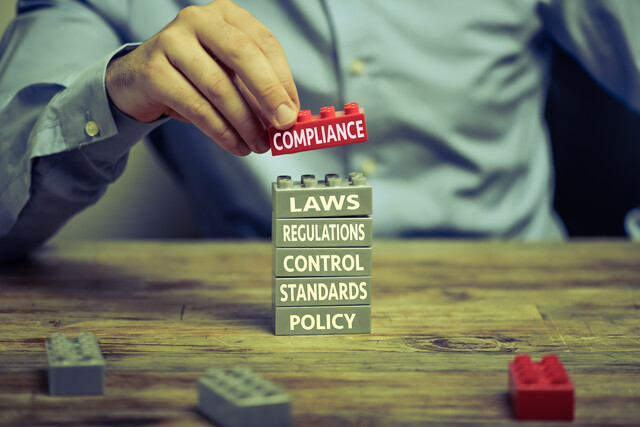This article outlines areas in a strategic plan that trips up many organizations. If the assessments are not properly researched and people not honest in their appraisals the whole strategic plan could lead to the organization's failure. Doors could be permanently closed and the lights turned out forever. This analysis is vital to the well-being of an organization and the viability of its strategic plan.
This investigation of sorts looks at the organization's strengths, weaknesses, opportunities and outside competitors, which also is known in some strategic plan models as threats. Breaking the organization's study down into four simple components ensures all the bases are analyzed and a clear picture of the organization's health is available for strategists mapping out the plan. The data will show organizational leaders what you are excelling at, what opportunities are being missed, and where assets need to be realigned for improved performance. The assessment also will offer a clear picture of the marketplace and where your organization stands, and how your marketing strategies are performing against others in your industry.
The final report of the investigation is a compass that will point you towards your goals as an organization. It will tell you where your organization's greatest potentials are located, enabling you to place assets in vital areas so the institution can reach that proverbial pot of gold at the end of the rainbow. This data will give your strategists vital steps needed in an organization's strategic plan.
The Process
The analysis focuses both inside and outside of the organization. It's a long hard look in the mirror and there are times that it's not pretty, but it is necessary if an organization is to compete in the marketplace and succeed. It also looks at the outside terrain � competition, consumer needs and interests, market viability, technology, legislation, and global influences. All these factors play a key role in the health of your organization.
Beginning is as simple as making a spreadsheet with four headings: Strengths, Weaknesses, Opportunities, and Outside Competitors or Threats. Some of the data being entered will be in multiple columns since it overlaps in various areas. An example of this could be a local rescue mission in the city has the Salvation Army open a large mission complex a block away. For the local mission, this is a blessing and a curse. The Salvation Army is a large nonprofit with massive resources compared to the local rescue mission. With its national recognition the Salvation Army could hurt the local mission's coffers along with taking some of its customer base. Donors might see it as more profitable to give their dollars to the national organization because it can do more than the small local mission. So that's a curse for the local organization. But, if the local mission were to partner up with the national organization to utilize some of its resources, then both organizations could benefit. The local rescue mission will be able to offer more resources to its customers and the Salvation Army would benefit from reaching more customers through a local organization. So there are times where data will fit in more than one column and that is okay.
Once the leader knows the areas and has a general idea of how the organization will be broken down for investigation, it is time to form a team and set up meeting times. It is essential that each member of the team is not a "yes" type person but can be trusted to speak frankly about the data uncovered. The team must be able to talk openly with each other and have the ability to discuss weaknesses and strengths found during their time in an organization's area. They must not only be able to point out the positives and negatives or vulnerabilities, but also list suggestions for improvements where needed. Team members must be detail oriented and willing to ask the tough questions. They must be willing to break tradition and implement changes where needed. They must be on board with improving an organization's processes.
Also be sure to set aside time for the investigative team to collaborate on questions, site analysis, and other collected data from each category. This collaboration could result in uncovering trends of strength or weaknesses within the organization -- information that is needed when organizing a strategic plan.
Take a look at each area of the organization � answering who, what, when, where, why, and how. Some of the things investigators should do are:
-
Look at the department, each office, and each area.
-
Look at the employees and their talents.
-
Look at who does what and why.
Some examples of questions that investigators should be asking themselves are:
-
Are leaders leading or convoluting the process?
-
Are talents being utilized or being squandered?
-
Is there viable and needed communication in the organization?
Analyze what each department does and look for duplicity or extraneous activities. Notice how each department accomplishes its tasks and uses the tools available. Are the tools meeting the needs or are better tools needed? Is technology meeting the needs or is it outdated and slowing down the processes?
Needless to say this takes time and depending on the size of your organization, outside help might be considered to ensure an accurate and thorough investigation takes place and all the questions are answered.
Looking for Strengths
Investigators entering an area are there to spot both the positive and negative. They are looking for strengths � things done well � and weaknesses � vulnerabilities and processes that need improving.
The major strength of an organization is its people, which also is an organization's greatest vulnerability. The people are the creative juices, leadership, and the future of any organization. Although society says computers are the intelligent driving force of business today � it really is the people. Computers break and can only do what they are programmed to do. People are needed to fix a broken computer and to program it.
So investigators need to look at the people within the organization. Yes, they are a key ingredient in the strength of an organization but they are not the complete backbone. While investigators are looking at employees, they also will be analyzing the processes, tools, and the ebb and flow of communication within each area of the organization.
General questions that initially must be answered are:
-
What are the individual talents noticed?
-
Are the people being utilized to their maximum potential?
-
Do they feel they are contributing and are a part of the process?
-
Are the leaders leading the people by example or sitting behind a closed door and not a part of the process?
-
Is there communication and unity within the organization?
-
Is everyone working towards the same goals?
-
Is production continuous throughout the day or does it fluctuate? If it fluctuates, why?
-
Does each person understand the process?
-
Does each person know where to find answers to their questions?
-
Is the technology meeting demands?
-
Are necessary supplies for projects easily available?
-
Describe the working environment.
-
Are all safety procedures being followed?
Looking for Weaknesses/Vulnerabilities
While looking for strengths investigators ultimately will uncover weaknesses. This is inevitable if the questions are being thoroughly and truthfully answered. And this is good. No organization is perfect and strong in all categories. The investigator's job is to locate the weaknesses and then the team's job is to learn if the weakness can be utilized as an organizational strength, or if it is a vulnerability that must be hardened before it becomes a break in the dam.
Weakness becoming a company's strength at first appears to be an oxymoron. And that is the way an investigator needs to look at the weakness. He needs to ask how this weakness can be made into an organizational strength or is it even possible. If the team looks outside the box there will be times when they will find the proverbial "pot of gold." Look at Nike as a great example. In the 1970s when the "Swoosh" symbol tennis shoe was making its impact on the sport's world, many businessmen and critiques were saying the company was a "fly by night" company that would fade away because it did not have its own manufacturing plant. In the eyes of the business world � not having its own research, design, and manufacturing plant were weaknesses. But the Nike team used this supposed weakness to their advantage. They utilized the strengths of the global business world by contracting with various manufacturers who were at the top of their game to provide them with a better product than their competitors. Nike's weakness became their strength and as they say, "The rest is history."
So it is vital for the investigators to look at the weaknesses and to start an initial analysis of the weakness while still performing their investigation. The reason for the continued look is so outside source data that possibly could strengthen the known weakness will not be overlooked while still collecting information. Once again, look at Nike as an example. If Phil Knight had not scheduled the interview with the manufacturer of Tiger running shoes in 1963, there would not be a Nike company as we know it today. Knight was still investigating his company's opportunities while he actually was on vacation, which led to an unconventional solution. The issues all started with Knight believing shoe manufacturers were not meeting the demands of athletes. He saw Tiger was far ahead of manufacturers in America, thus for his unconventional solution that turned Knight's company into an industry leader.
Weaknesses are not necessarily vulnerabilities. An organization's weakness could also be its strength in the marketplace but its vulnerability could place an organization in a situation where its doors are closed forever. So there are differences and investigators need to understand the subtle but vast differences. Look at this example. A company has its own design team with all the latest technology. Its leader is a creative and an artistic genius but does not know all the software the company has implemented for its latest project. That is a weakness that can be corrected, but as the project begins it is a definite weakness. Another example is an organization's product is practically identical to its competition � both in price, ease, and availability. That is both a weakness and strength.
An item listed as a vulnerability for an organization means it cannot be easily fixed or defended. Look at General Motors Oldsmobile for example. In the GM business plan, the Oldsmobile brand was placed as a stepping stone from its cheaper line of cars to its higher end car nameplates of Buick and Cadillac. But as manufacturing prices rose, competition grew and foreign auto manufacturers began competing on GM's home turf, Oldsmobile started sharing components and even complete automobiles to cut manufacturing costs so the automaker could keep a competitive edge pricewise. Being the "middle" stepping stone became its vulnerability. The auto marketplace always has had two main focuses for survival � new buyers and the older more affluent consumers. The auto industry attracts new buyers with its low-cost no frills entry level automobiles that have low profit margins but hopefully will create a life-time buyer. At the other end of the spectrum, the industry offers expensive, luxurious, and roomy sophistication to its affluent customers, which also carry large profit margins for the automaker. These two facts of life left Oldsmobile without product identity and a low priority for the company. Those two facts left the automaker vulnerable. Oldsmobile's last hurrah was with the 2004 models � its 106 year history came to an end.
Environmental Analysis
Oldsmobile failed to assess its environment years before its doors closed. The brand failed to see the consumer shift to smaller more fuel efficient cars. It failed to see the competition from overseas whittling away at its profit margins. The company was stuck in tradition. But it also failed to look at its internal environment. And that is where a company commits suicide � by not honestly assessing its own self and its own processes.
The environment an organization operates in is critical to its way of doing business. If the organization is its only competition, then the organization has many freedoms to dictate its own rules as long as it meets the consumer's needs and demands. But if the marketplace is saturated then the rules of competition apply and each step must be scrutinized and have a competitive precision to it. Strategic planners must know what type of marketplace it is competing in and investigators must look at the ripples in the environment to try and predict the market 30 years down the road.
To know an organization's outside environment it must know its competition better than they know themselves. A competitor's strengths and weaknesses must be known � even down to its suppliers and its delivery processes. UnderArmour, a relative newcomer to the sports apparel industry, has taken on Nike in the quest for athletic customers. In their strategy analysis, the company leaders investigated where Nike revenues come from so they could learn all their weaknesses. In their strategy analysis they realized they needed to expand their global focus and reach new markets overseas to be a true threat to Nike. And their research and strategies are paying dividends � 25 percent growth for three straight years.
The same detail is needed when looking internally too. One of the key indicators that things are running smoothly in an organization is the people's morale. Are they happy to come to work or do they complain and show up late? Is the communication process effective or do projects have to be reworked because details were left out of the instructions?
While investigating the internal environment, one area to look at is the various leaders. A leader dictates an employee's morale and effectiveness, which is critical to an organization's environment. Leadership can become a bottleneck in the process or an open gate allowing easy flow through their department.
Along with leadership, another internal environmental area to look at is the technology. Make sure it is adequate to meet the needs of the moment, but also that it is adaptable and can be easily updated as needed to meet the needs of tomorrow. This is critical information for a strategic plan. Knowledgeable investigators are needed for this assessment.
The bottom line: Assessment is an information gathering step in the process before writing a strategic plan. If an organization begins writing a strategic plan without having completed this process, the plan will be incomplete and worthless.
























